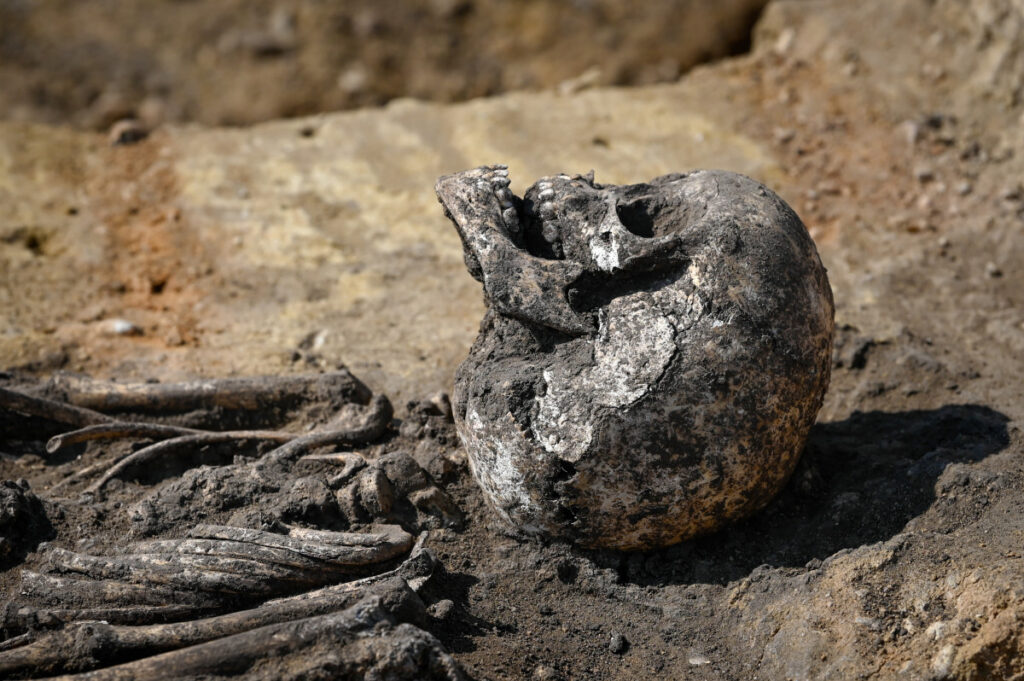Archaeologists in Italy have made a fascinating yet eerie discovery at a Neolithic site in Puglia, where they uncovered at least 15 human skulls and approximately 400 bone fragments, with a notable majority belonging to males. This excavation took place at Masseria Candelaro, an ancient village encompassed by moats. The findings have raised numerous questions, particularly because the remains were not situated in an official burial site but rather in a mound within an area that locals identified as Structure Q—a part of the village designated for storing domestic and ceremonial items. Radiocarbon dating has established that these skulls date from between 5618 and 5335 B.C., across a span of three centuries, indicating a prolonged interaction with these remains.
Interestingly, the condition of the skulls suggests they did not meet violent ends, as many were found cracked or shattered, yet this does not imply a brutal death for their former owners. Jess Thompson, the lead author of the study and an archaeologist at the University of Cambridge, posits that the skulls may have been actively handled and may have formed part of an ancestral burial practice. The positioning of these remains, lightly covered in dirt, implies a hasty discarding rather than a respectful burial, raising further speculation about the cultural practices of the people of Masseria Candelaro.
One of the most compelling hypotheses put forward by Thompson is that the skulls could belong to enemies taken as trophies of warfare. This interpretation could account for their seemingly undignified placement, aligning with anthropological understandings of head-hunting traditions which serve both as a means of decommissioning a defeated foe and as a symbolic act of removal from the realm of the living. Such practices reflect a deep-rooted significance attached to human remains in many cultures, whether as a method to affirm dominance or to impose a metaphysical banishment.
The precise rationale behind the storage and handling of these skulls remains an enigma, as Thompson and her team continue their investigation into the cultural meaning behind these bones. She speculates that human skeletal remains held particular significance, perhaps understood as potent or efficacious substances within their society. The site’s context suggests that the inhabitants might have interacted with these remains regularly, indicating a ritualistic relationship rather than one merely of memory or reverence.
Thompson emphasizes the dual nature of the discovery: while part of it might signify a darker aspect of ancestral veneration involving warfare, the absence of modifications to the bones raises questions about their intended use. For instance, there were no discernible alterations that would suggest the skulls were displayed in a specific manner, such as being hung or mounted. This lack of evidence adds layers of complexity to the inquiry, as it evokes a broader dialogue about the potential purpose behind such a collection of human remains in a community that appears to be engaged in ritualistic practices.
In conclusion, the findings from the Masseria Candelaro excavation open up new avenues for understanding the complex relationship between ancient peoples and their dead. The discovery of these skulls, along with the surrounding skeletal fragments, forces a reconsideration of Neolithic burial practices and ancestral rituals, particularly regarding how war and death were intertwined in the lives of prehistoric humans in Italy. These remnants might serve not only as a testament to human mortality but also to the various cultural narratives that exist around death, memory, and warfare, reflecting a society that approached the concepts of life and death in multifaceted ways. As the investigation continues, it remains to be seen what further insights into the past can be gleaned from these ancient remains.

